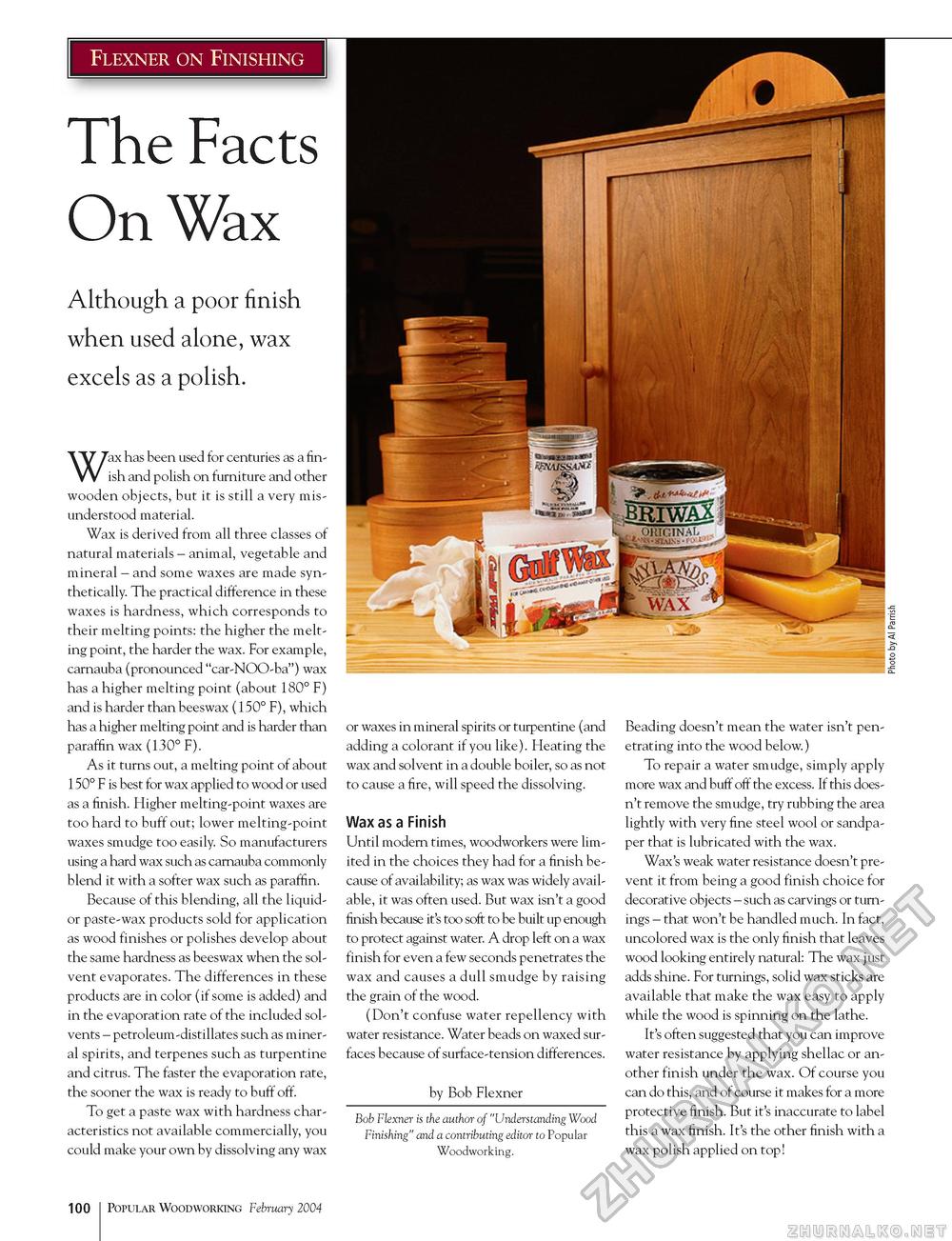Popular Woodworking 2004-02 № 139, страница 102
Flexner on Finishing The Facts On Wax Although a poor finish when used alone, wax excels as a polish. Wax has been used for centuries as a finish and polish on furniture and other wooden objects, but it is still a very misunderstood material. Wax is derived from all three classes of natural materials - animal, vegetable and mineral - and some waxes are made synthetically. The practical difference in these waxes is hardness, which corresponds to their melting points: the higher the melting point, the harder the wax. For example, carnauba (pronounced "car-NOO-ba") wax has a higher melting point (about 180° F) and is harder than beeswax (150° F), which has a higher melting point and is harder than paraffin wax (130° F). As it turns out, a melting point of about 150° F is best for wax applied to wood or used as a finish. Higher melting-point waxes are too hard to buff out; lower melting-point waxes smudge too easily. So manufacturers using a hard wax such as carnauba commonly blend it with a softer wax such as paraffin. Because of this blending, all the liquid-or paste-wax products sold for application as wood finishes or polishes develop about the same hardness as beeswax when the solvent evaporates. The differences in these products are in color (if some is added) and in the evaporation rate of the included solvents - petroleum-distillates such as mineral spirits, and terpenes such as turpentine and citrus. The faster the evaporation rate, the sooner the wax is ready to buff off. To get a paste wax with hardness characteristics not available commercially, you could make your own by dissolving any wax or waxes in mineral spirits or turpentine (and adding a colorant if you like). Heating the wax and solvent in a double boiler, so as not to cause a fire, will speed the dissolving. Wax as a Finish Until modern times, woodworkers were limited in the choices they had for a finish because of availability; as wax was widely available, it was often used. But wax isn't a good finish because it's too soft to be built up enough to protect against water. A drop left on a wax finish for even a few seconds penetrates the wax and causes a dull smudge by raising the grain of the wood. (Don't confuse water repellency with water resistance. Water beads on waxed surfaces because of surface-tension differences. by Bob Flexner Bob Flexner is the author of "Understanding Wood Finishing" and a contributing editor to Popular Woodworking. Beading doesn't mean the water isn't penetrating into the wood below.) To repair a water smudge, simply apply more wax and buff off the excess. If this doesn't remove the smudge, try rubbing the area lightly with very fine steel wool or sandpaper that is lubricated with the wax. Wax's weak water resistance doesn't prevent it from being a good finish choice for decorative objects - such as carvings or turnings - that won't be handled much. In fact, uncolored wax is the only finish that leaves wood looking entirely natural: The wax just adds shine. For turnings, solid wax sticks are available that make the wax easy to apply while the wood is spinning on the lathe. It's often suggested that you can improve water resistance by applying shellac or another finish under the wax. Of course you can do this, and of course it makes for a more protective finish. But it's inaccurate to label this a wax finish. It's the other finish with a wax polish applied on top! 100 Popular Woodworking February 2004 |








